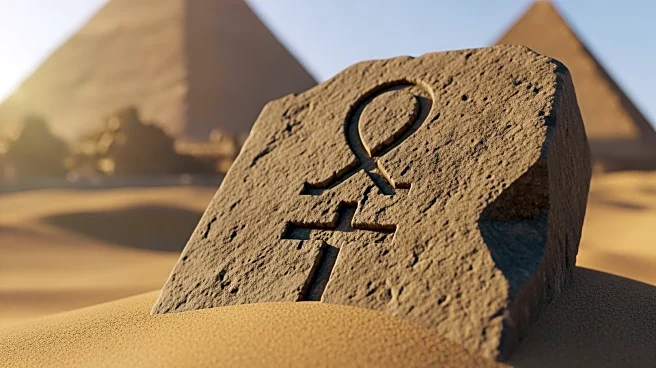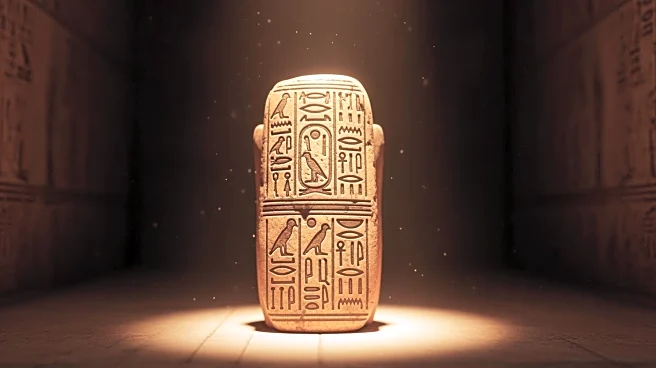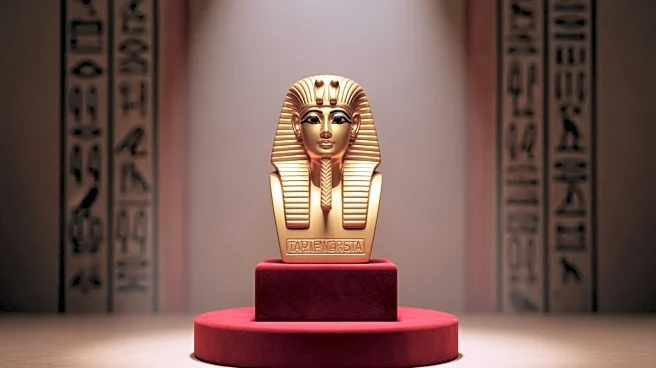What's Happening?
A recent study has revealed the possibility of an undiscovered entrance in the Menkaure Pyramid, the third-largest pyramid in Giza. This discovery is the result of years of non-invasive research using
advanced technology such as georadar, ultrasound, and electrical resistivity tomography (ERT). These methods have identified air-filled voids behind the eastern facade of the pyramid, suggesting the presence of unexplored spaces. The study, published in the journal NDT & E International, marks a significant step in understanding the pyramid's internal structure without damaging the ancient stones.
Why It's Important?
The discovery of a potential hidden entrance in the Menkaure Pyramid could provide new insights into ancient Egyptian construction techniques and the historical significance of these monumental structures. This finding adds another layer of mystery to the pyramid, which has long intrigued archaeologists and historians. Understanding the layout and purpose of these hidden passages could lead to a better comprehension of the cultural and architectural practices of ancient Egypt, potentially revealing new areas for exploration and study.
What's Next?
Further research and exploration are likely to follow this discovery, as archaeologists and historians seek to confirm the presence of the hidden entrance and understand its purpose. The use of non-invasive testing methods will continue to play a crucial role in preserving the integrity of the pyramid while uncovering its secrets. This could lead to more discoveries within the Menkaure Pyramid and other structures in Giza, enhancing our knowledge of ancient Egyptian civilization.
Beyond the Headlines
The use of advanced non-destructive testing techniques in archaeology represents a significant shift towards preserving historical artifacts while exploring their mysteries. This approach not only protects the physical integrity of ancient structures but also opens up new possibilities for discovering hidden features that were previously inaccessible. The ethical implications of preserving cultural heritage while advancing scientific knowledge are central to this development.












